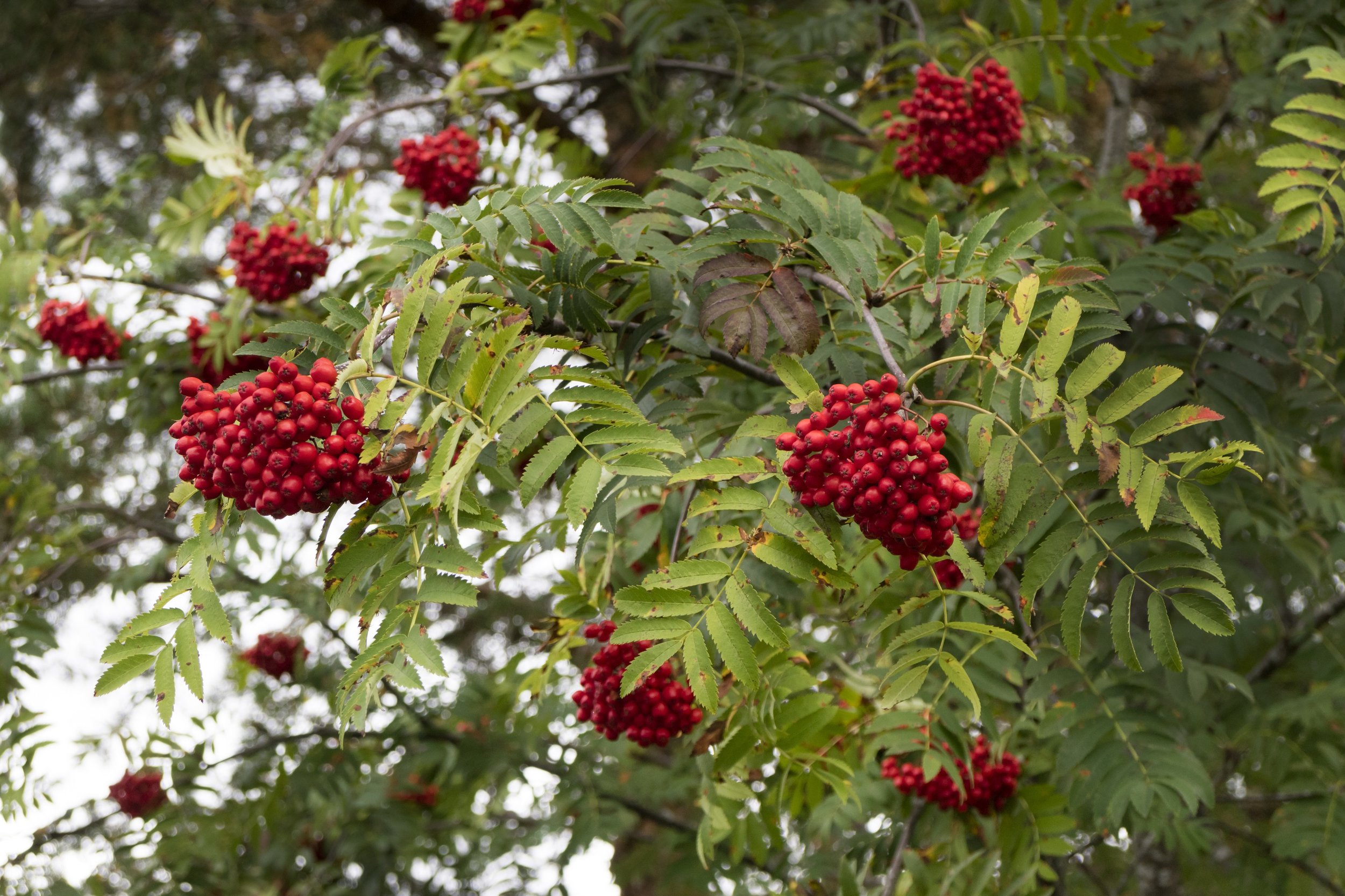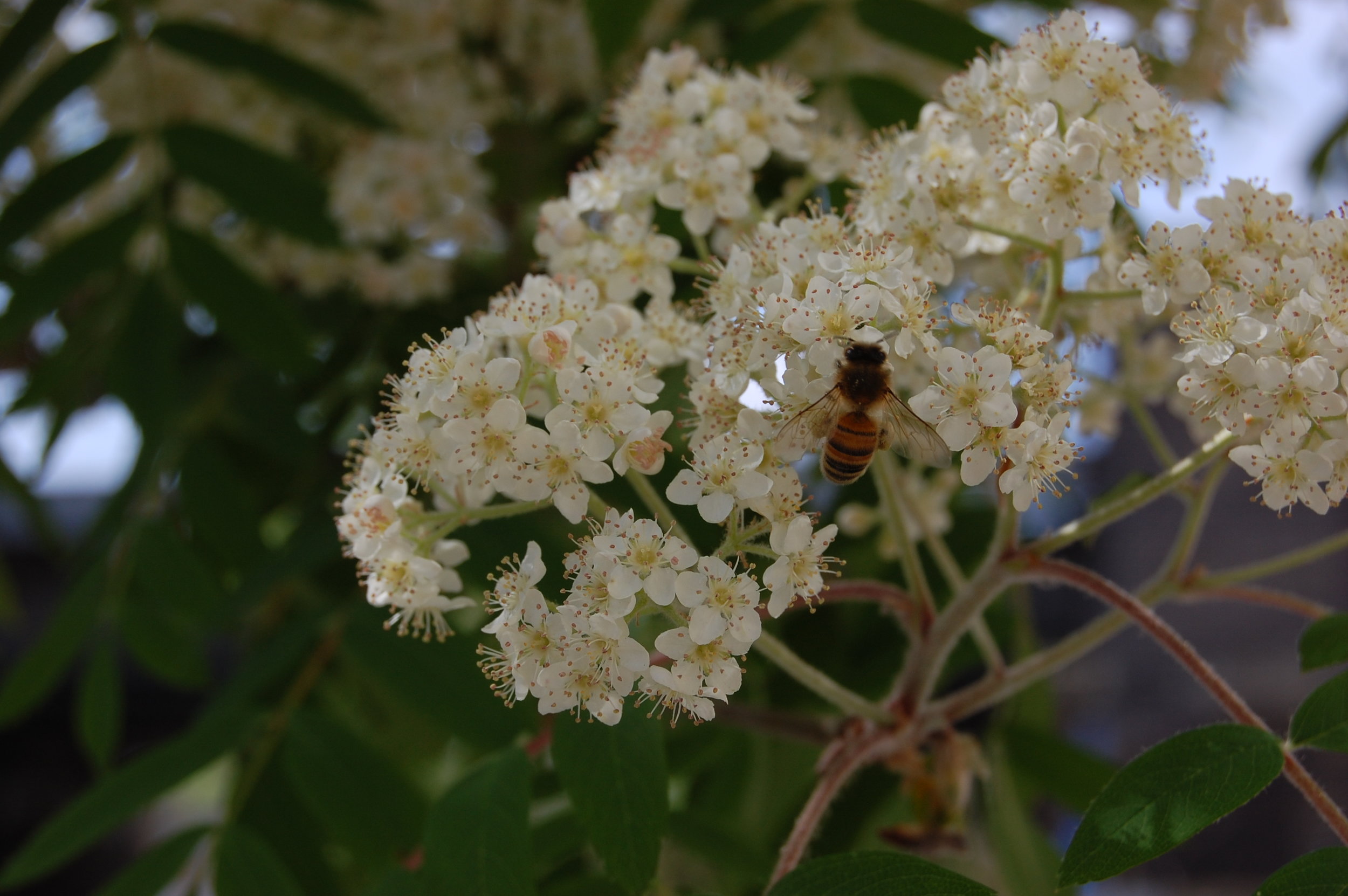Sorbus / Mt. Ash
sorbus / mountain ash
Commonly called European mountain ash, these trees are native to Europe and Asia. They have been widely planted in northern North America as an ornamental and has naturalized in some parts of Canada and the northern U.S. It is primarily cultivated for its compound green leaves and attractive clusters of fall fruit. Small, white, five petaled flowers bloom May. Flowers give way to pendant clusters of orange-red berry-like drupes in late summer. Mountain ash have ash-like leaves, but are members of the rose family, and are not related to true ashes (Fraxinus), which are in the olive family. As such they are immune to the threat of the Emerald Ash Borer.
cardinal Royal®mountain ash
Sorbus aucuparia 'Michred'
This improved selection of Mountain ash was developed by Michigan State University. It has dark green foliage with a silvery underside and is a vigorous grower. Brilliant red berries are borne in August-September. It will provide best performance in acid soils with good drainage.
Height: 20 - 30 ft
Spread: 15 - 20 ft
Fall Color: Rust red
USDA Zone: 2 - 7
“Mountain ash have ash-like leaves, but are members of the rose family, and are not related to true ashes (Fraxinus), which are in the olive family.”
care and pruning:
POSITIVES:
These trees are often planted for the beautiful white flowers they provide in spring. The flowers mature to rich dark colored berries that are often food for birds and other wildlife. These are a great tree for the natural landscape that give tremendous interest.
DRAWBACKS:
Perhaps the two biggest drawbacks people have experienced with this tree is the mess that the fruit is to lawns and sidewalks. As such it is probably not the best tree of choice for a yard.
The other drawback is that these trees (being members of the Rose family) are susceptible to Fireblight. A bacterial disease that enters the tree through insects and rain that pollinate the flowers in spring. Fireblight can eventually kill the tree if left untreated.
PRUNING:
The optimal pruning time for Mountain Ash is Autumn to early winter once the leaves begin to change color. Mountain Ash are subject to consistent pruning to help them to maintain a good structure for their heavy fruits.
For more on identifying old wood and new wood see our page on care of woody plants.



